Why did Noah Lyles run the 200m final with COVID? How are American athletes like Ariana Ramsey accessing free health care? Your Olympic health questions answered.
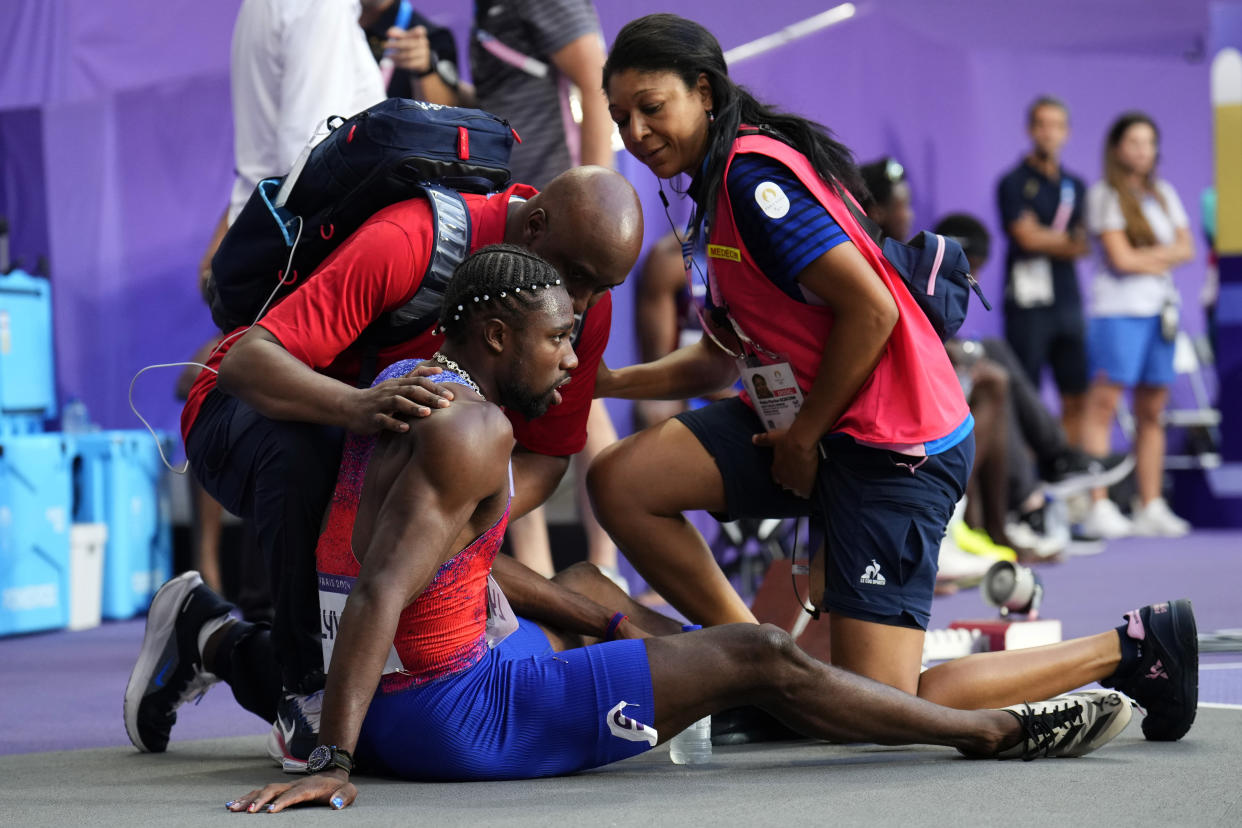
Olympians need to fuel up and get in the right mindset to perform at peak levels in the hopes of taking home gold. But then there are the X factors — like COVID-19, injuries, pregnancies and even dirty water — that can add extra challenges and, in some cases, make headlines just as much as the awe-inspiring performances themselves.
There’s a lot to keep up with, but if you’re feeling out of the loop, don’t worry, we’re here to answer some of your most burning — no pun intended — Olympic health questions as the 2024 Paris Games continue.
Click on the links below to jump straight to a specific question:
Some Olympians are testing positive for COVID. What precautions are being taken?
How are American athletes like Ariana Ramsey accessing free health care?
Why did a disqualified wrestler cut her hair before weigh-in?
How can athletes like gymnast Stephen Nedoroscik compete without their glasses?
Noah Lyles ran with COVID. Why?
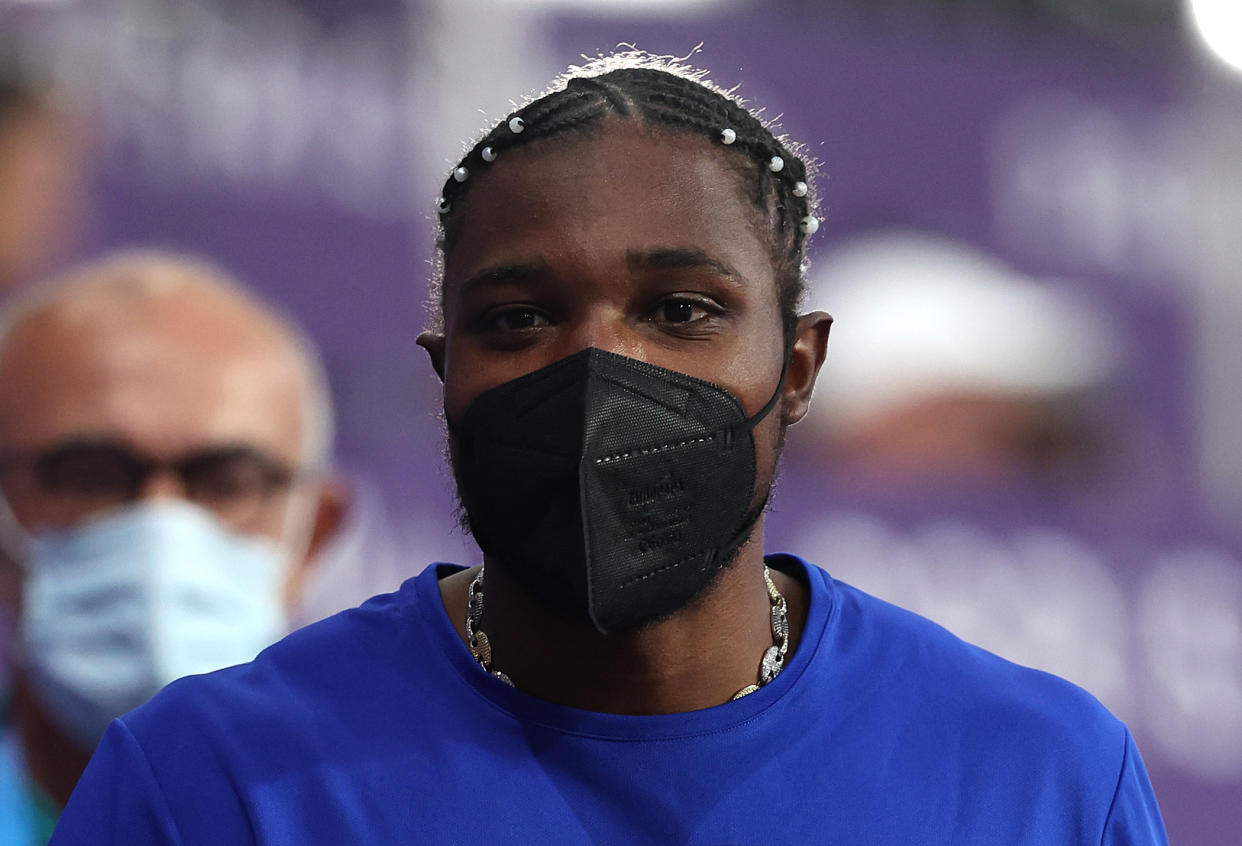
Runner Noah Lyles tested positive for COVID on Tuesday. Two days later, he ran his signature race, the 200-meter sprint, and placed in third. "It's taken its toll for sure," Lyles told NBC, close to an hour post-competition. "I've never been more proud of myself for coming out here and getting a bronze medal." Lyles, who has asthma, received medical treatment after crossing the finish line.
USA Track & Field said they adhered to International Olympic Committee and Centers for Disease Control guidelines. “After a thorough medical evaluation, Noah chose to compete tonight,” a statement from the organization read. “We respect his decision and will continue to monitor his condition closely.”
Lyles, 27, is an elite athlete who has spent years training. Exercising with COVID is OK in some situations, like when asymptomatic, experiencing mild conditions or mostly on the road to recovery, according to VeryWell Health. Every sick person's situation is different, but experts mostly agree that exercise should be postponed or reduced until a patient is feeling 100%.
Some Olympians are testing positive for COVID. What precautions are being taken?
Multiple athletes have tested positive for COVID at the Paris Games, but these are being considered the first post-pandemic Olympics — meaning there are no set rules or restrictions around COVID.
Today reports that the U.S. swim team — which includes two swimmers who have tested positive for the virus — doesn't have any mandatory masking or testing in place, though more masks were spotted poolside on staff and athletes last Wednesday.
“We encourage our athletes to do whatever makes them most comfortable, working with the team doctors," a U.S. swim team spokesperson said.
And the Australian team is “treating COVID no differently to other bugs like the flu,” according to Anna Meares, the chef de mission for the Australian Olympic team, who added that the water polo players who tested positive for COVID will wear masks, isolate from team members outside of training and avoid high-volume areas.
NBC News medical contributor Dr. Kavita Patel told Today the Paris Olympics don’t qualify as a COVID outbreak at the moment; based on existing guidelines, 5% of athletes would need to test positive within a seven-day period to qualify as an outbreak.
How are American athletes like Ariana Ramsey accessing free health care?
Ariana Ramsey has access to free health care in the Olympic Village and she is taking full advantage. "Not only in the [Olympic] village do we have free food, but we have free dental, free health care. I literally just got a pap smear, for free. And I have a dentist appointment [and] an eye exam next week," the Bronze-winning rugby player said in a TikTok video. "Like, what?" She added in the caption: "I quite literally love it here. The way the Olympic Village has free healthcare, but America doesn't."
The Olympic Village has offered free services at its "polyclinic" since the 1932 Games in Los Angeles. Services for athletes include free cardiology, orthopedics, physiotherapy, psychology, podiatry and sports medicine, as well as dermatology for Paralympians, according to Sports Illustrated. A spokesperson for the Games told Self that the Olympics organizing committee — not the French government — covers the cost of health care for competitors (and their "companions").
Puerto Rican skateboarder Steven Piñeiro said he'll be heading to the dentist, rather than Disneyland, before he leaves Paris. And Paralympian Nicky Nieves realized that the village might be the "only opportunity" for many of her peers to get needed adjustments to prosthetics and access other health care, the U.S. sitting volleyball player said.
Americans accessing the polyclinic's services underscores the contrast between health care in the U.S. and other high-income countries. A 2021 report from the Commonwealth Fund ranked the U.S. last among 11 of its peers in providing its citizens equitable access to affordable, high-quality health care with half of lower-income U.S. adults saying that costs prevented them from getting needed health care
Why does this Olympian wear a mask?
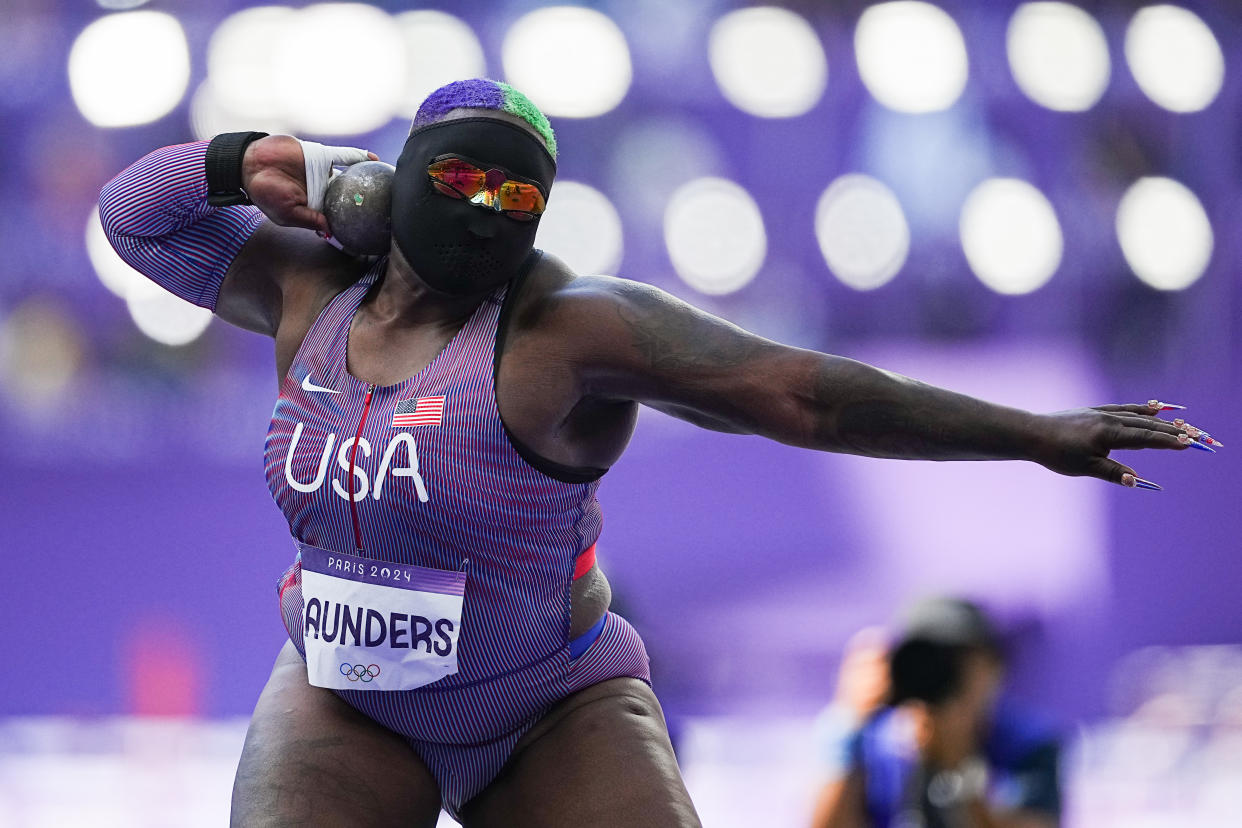
U.S. shot-putter Raven Saunders is known for wearing unusual masks while competing and, true to form, wore a thick black ski mask during qualifications on Thursday.
The Olympian, who uses the pronouns they and them, told Yahoo Sports during the Tokyo Olympics in 2021 that they wore the mask initially because of COVID-19. But now Saunders has found it serves as a deterrent to chit-chatting with others between throws, and allows them to focus more on helpful internal dialogue.
"Pretty much to sum it up I’m telling myself, 'You got it, you got it, you’re a champion, you have to push, you gotta push, nobody is going to give it to you, you have to work, you have to grind, you gotta get it,'" Saunders said. "Things like that, just a lot of positive affirmations to be able to give myself the power and be able to get done what I need to get done."
How did this gold medalist's shot put hand get so big?
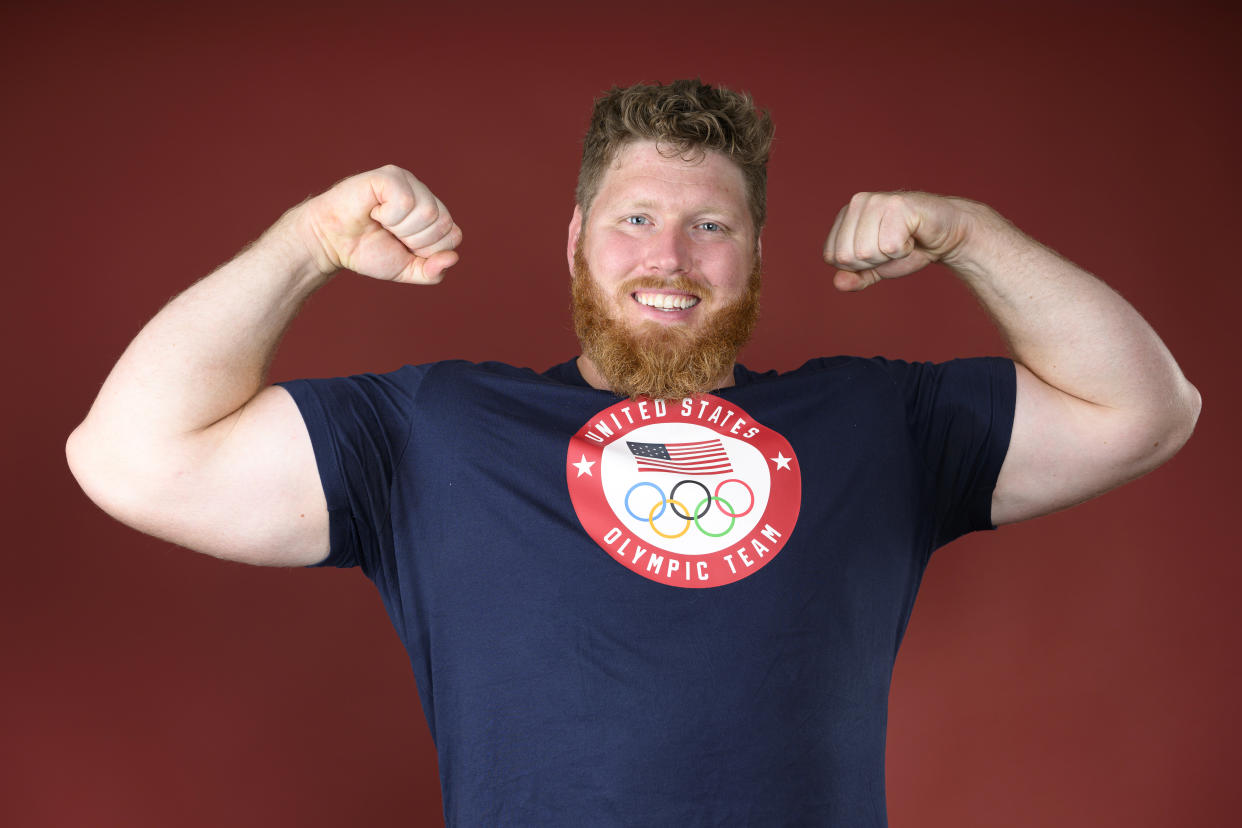
Olympic shot put champion Ryan Crouser has set records, winning an unprecedented three gold medals in a row — one at each of the last three summer Olympics. While speaking with Today after his latest victory, Crouser showed off how much bigger his right hand (which he uses for shot put) is than his left hand.
The U.S. gold medalist credited his sport for causing his throwing hand to bulk up. "16 pounds going almost 40 miles an hour off the fingertips, you get strong fingertips," he told Today.
Shot put athletes combine "strength, speed, balance, agility and explosive power. " And while the actual size of your hand is restricted by the length and width of its 27 bones, working out its 30 different muscles can help it appear larger.
"If you look at my right side, it's almost like a boxing glove," U.S. shot-putter Joe Kovacs, who won silver at the Paris Olympics, previously said in an interview. "There's no knuckles, it's swollen, it's a completely different size."
Why did a disqualified wrestler cut her hair before weigh-in?
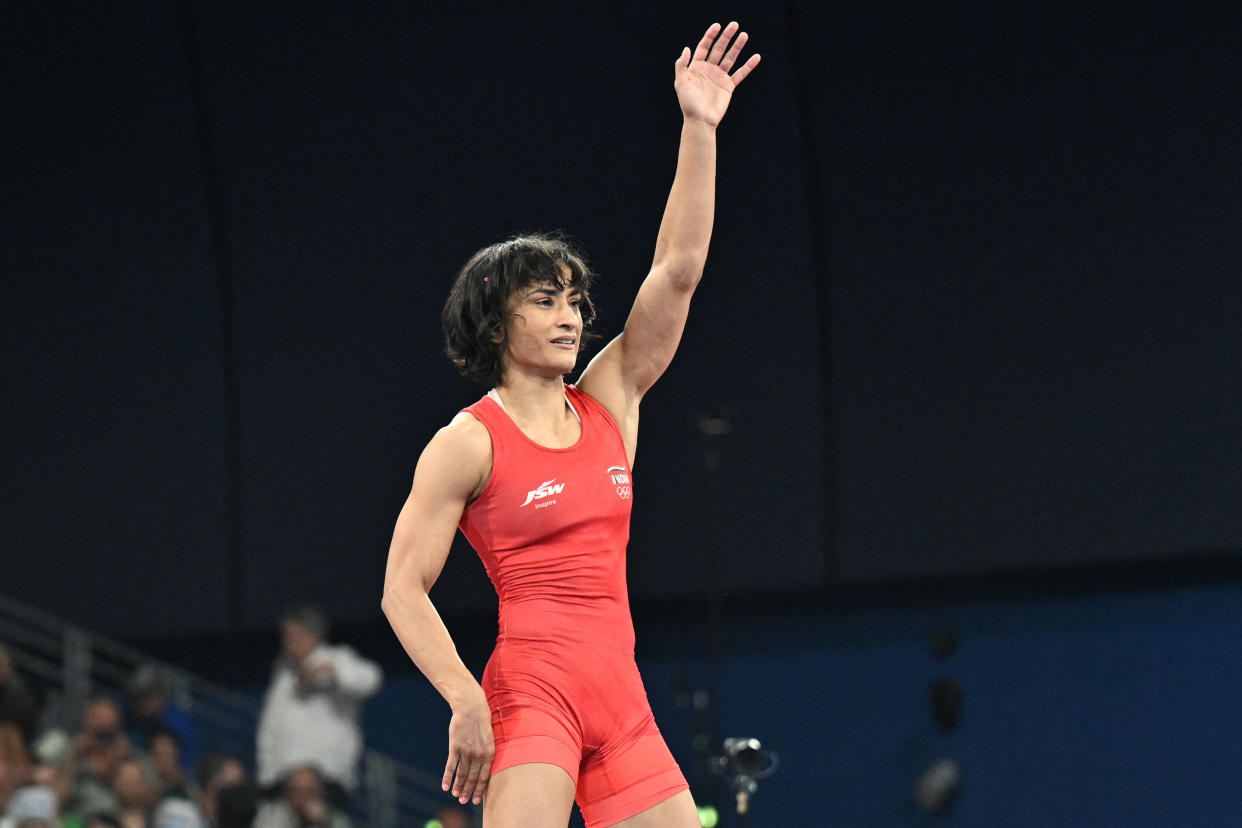
Indian wrestler Vinesh Phogat, who defeated Cuba's Yusneylys Guzmán 5-0 in the semifinal on Tuesday, has been disqualified from Thursday's women's 50kg wrestling tournament after failing her second weigh-in.
Yahoo Sports reports that the Indian delegation's efforts to get Phogat under weight involved, per India's Sportstar, not eating or drinking the night before the match, cutting her hair, drawing blood and using a sauna. Even so, Phogat failed to lose the 100 grams required to make weigh-in, and according to India Today, was hospitalized after fainting due to dehydration.
According to the BBC, thirst is the first stage of dehydration, "which kicks in when 2% of body weight is lost." Exercising in extreme heat like we've seen at the Paris Olympics, where temperatures have soared to nearly to 100°F, exacerbates dehydration, with the human body capable of losing 2.6 to 5.3 pints of water every hour through sweat.
Dehydration can lead to serious complications like seizures, urinary and kidney problems and low blood volume shock — which is when low blood volume causes drops in blood pressure and in the amount of oxygen in the body.
Is the Seine river making athletes sick?
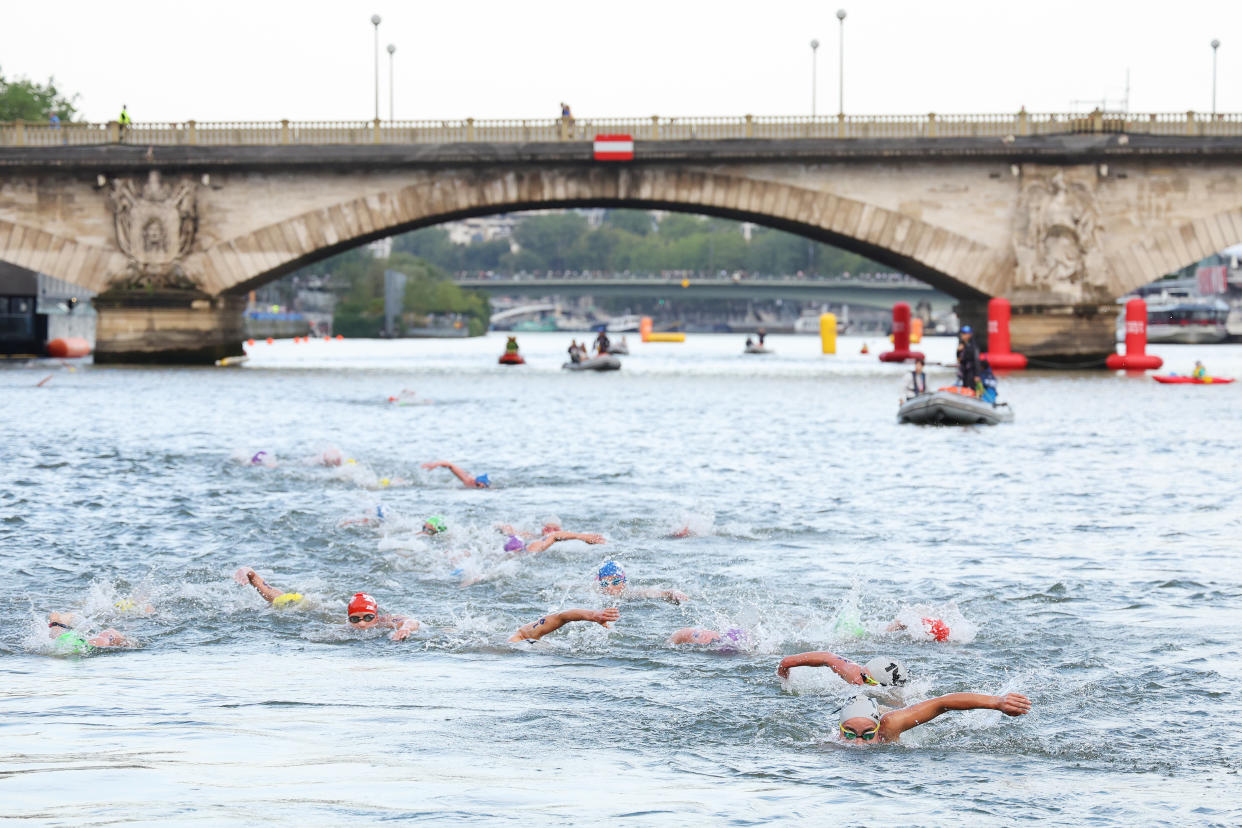
Cleaning up the Seine to make it safe for swimming for the first time in 100 years cost $1.5 billion — but did it work?
A slew of athletes have taken ill, though the source of their sickness is unclear. On Sunday, Belgium announced that it was withdrawing its team from the mixed relay triathlon (a portion of which takes place in the Seine) after Belgian competitor Claire Michel got sick after swimming in the river during the women's triathlon on Wednesday.
Swiss officials said on Saturday that triathlete Adrien Briffod, who also competed in the Seine on Wednesday, had fallen ill with a stomach infection; and on Sunday, they updated that triathlete Simon Westermann, who had not participated in any swims in the Seine, also needed to withdraw due to a stomach infection.
And Norwegian triathlete Vetle Bergsvik Thorn said he woke up the morning after swimming in the river with an upset stomach and vomiting, though he felt better later that day and still planned to continue competing. Thorn and the team's doctor both suspected food poisoning.
The big concern for Olympic organizers and athletes alike has been high levels of E. coli — a bacteria that can cause diarrhea and also lead to other infections. CBS News reports that “water quality in the Seine is directly affected by rainfall that can lead to wastewater runoff flowing into the river,” so weather conditions will make a big difference. But the Associated Press reports that Aurélie Merle, the Paris 2024 director of sports, said previously that water samples are taken nearly 22 hours before decisions are made about whether it’s safe to swim, so results may not be exactly accurate on the day of the race.
How were athletes preparing? The New York Times reports that U.S. triathlete Taylor Spivey has been “upping her probiotic intake” to “have a strong gut” to guard against any sicknesses from swallowing the river water.
U.S. triathlete Seth Rider has took an unconventional approach, saying, “I just try to increase my E. coli threshold by exposing myself to a bit of E. coli in your day-to-day life. … Just little things throughout your day, like not washing your hands after you go to the bathroom.” (But we should note that the Centers for Disease Control and Prevention says handwashing is actually one of the best ways to protect against E. coli infection.)
How do ice vests work?
Temperatures in Paris have been close to 100°F, presenting a serious challenge to competitors.
The Olympic Village, which was originally designed to be AC-free, was fitted with over 2,500 portable air-conditioning units ahead of the Games in response to concerns about soaring temperatures. Still, gymnastics star Simone Biles says the 45-minute bus ride to her event didn't have AC and was "like 9,000 degrees."
CNBC reports that "hot weather protocols" have included extra breaks for tennis and soccer players, umbrellas for BMX riders and ice vests for sailing event participants.
Reuters reports that the ice vests "have four compartments in which ice packs are inserted straight from the freezer and can last several hours," but the vests aren't a foolproof fix. Czech athlete Zofia Burska said she wasn't wearing hers because it had sprung a leak.
"The water runs down my back and I don't like it," she said.
How else are athletes keeping their cool? U.S. tennis player Coco Gauff said she took an ice bath after her match; U.S. skateboarder Jagger Eaton said he kept two towels handy, as well as “just pounding” drinks; and New Zealand's women’s rugby sevens team enjoyed "slushies, ice blocks, shade, ice water and cold baths before competing," the Associated Press says.
What's going on with Colin Jost's foot?
Comedian Colin Jost injured his foot on coral while covering surfing at the Olympics for NBC in Tahiti. The Saturday Night Live star was doing some surfing of his own when he stood on a coral reef and hurt his toes shortly after arriving at the French Polynesian island.
“I’ve been visiting the medical tent regularly. It’s a weird feeling when you’re in the medical tent way more than any of the athletes,” Jost told NBC Olympics Late Night host Maria Taylor. “[The medical staff] started saying, ‘We need to see you every day,’ which at first I was like, ‘Oh my God, guys, I like you too.’ And they were like, ‘No, it’s because the infection hasn’t improved.’”
Divers Alert Network (DAN) says that “cuts and scrapes from sharp-edged coral and barnacles tend to fester and may take weeks or even months to heal.” DAN also notes that coral are “covered by living marine organisms” — making the injuries from them uniquely challenging to treat.
In a joke later in the NBC interview, Jost elaborated more on his infection, saying, “Why did the chicken cross the road? To peck at the staph infection in my foot.” After missing some broadcasts, Jost returned to Instagram this week to assure fans that "rumors of my death have been greatly exaggerated."
Staph infections are caused by bacteria called Staphylococcus aureus, and can become deadly if the bacteria enters the bloodstream, joints, bones, lungs or heart, the Mayo Clinic says. Treatment involves antibiotics and thoroughly cleaning and covering the infected area to prevent it from spreading.
A fencer competed while 7 months pregnant. Is that safe?
After she had finished competing, Olympian Nada Hafez revealed on Instagram that she had taken part in the 2024 Paris Games while seven months pregnant.
"The rollercoaster of pregnancy is tough on its own, but having to fight to keep the balance of life & sports was nothing short of strenuous, however worth it," the Egyptian fencer wrote.
And Hafez isn't the only one to participate in the Games while pregnant. Archer Yaylagul Ramazanova, who is from Azerbaijan, competed while she was six and a half months pregnant and said she shot a perfect 10 after feeling her baby kick.
“I didn’t feel uncomfortable with my pregnancy,” Ramazanova told Chinese state news agency Xinhua News on Aug. 5. “Instead, I felt that I was not fighting alone, but fighting together with my baby.”
While touting the Olympic Village nursery, the International Olympic Committee had said before the Games that they “want to ensure that pregnancy and motherhood do not mean a career end in particular for female athletes.”
Johns Hopkins Medicine says that high-performance athletes can usually maintain their exercise regimens while pregnant as long as the pregnancy is uncomplicated and they consult with their health care provider. In fact, pregnancy may even offer elite athletes an advantage. One expert told the New York Times in 2017 — after tennis star Serena Williams won her 23rd Grand Slam singles title while eight weeks pregnant — that early pregnancy may offer an endurance advantage to athletes “as a result of the increase in oxygen-carrying red blood cells.”
What are those dark circles I'm seeing on some Olympians?
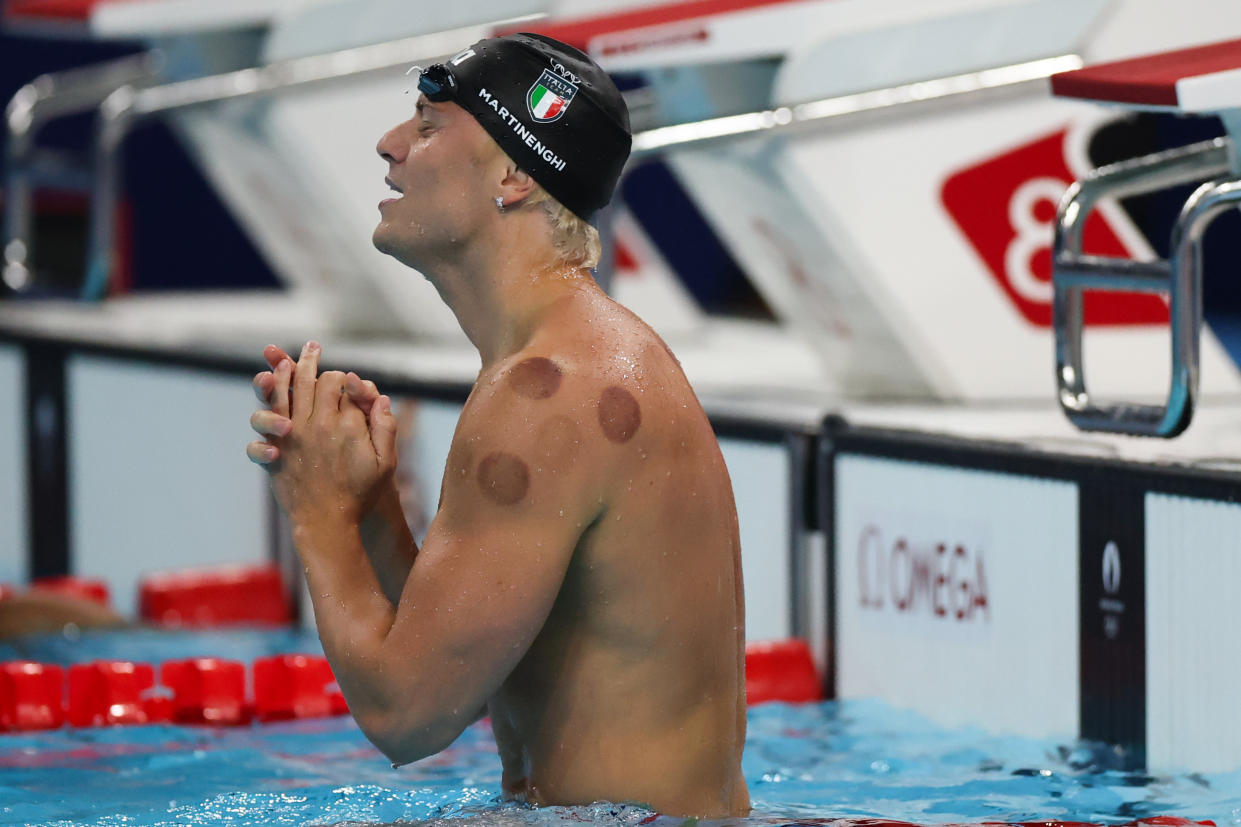
They’re the marks caused by a practice known as cupping, which involves placing cups on the skin for several minutes to create suction. The discoloration is caused by broken blood vessels beneath the skin, similar to bruising, and fades over a few weeks.
Cupping has been practiced in Chinese medicine and some Middle Eastern cultures for thousands of years. It was in part popularized in the sports world by swimming legend Michael Phelps, who donned the marks at the 2016 Rio Olympics.
Fans of the technique claim it can promote blood circulation, alleviate back or neck pain and improve immune function, among other things. But the National Institutes of Health says there’s no concrete evidence to back up these purported health benefits, and may even have unwanted side effects like “persistent skin discoloration, scars, burns and infections.”
What is Simone Biles's leg injury?
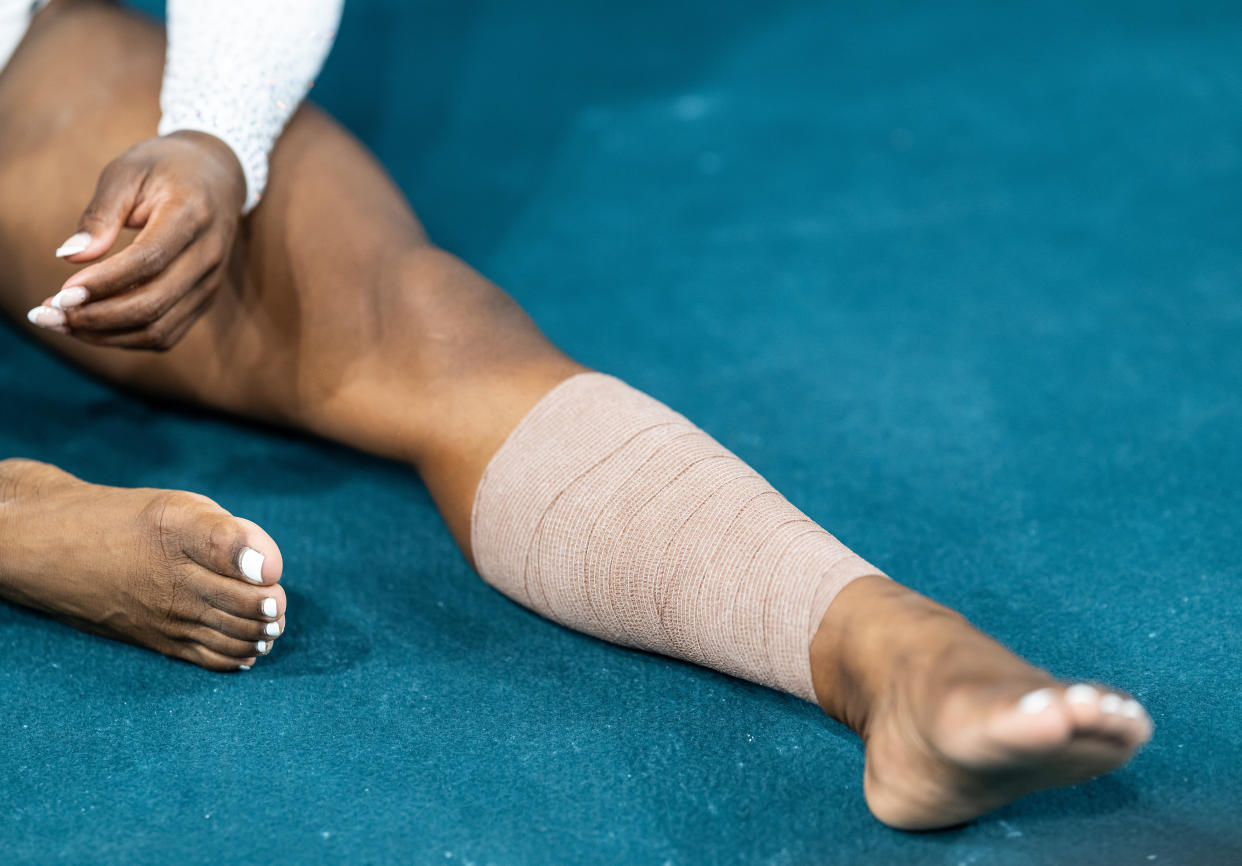
Fans were concerned when GOAT gymnast Simone Biles displayed a wrapped up left leg during the Paris games. So what was behind the bandages?
Yahoo Sports reports that Biles suffered a left calf injury during qualifications in Paris, apparently “during a warm-up tumbling pass on the floor exercise.”
Biles’s coach Cecile Landi said Biles “just [felt] a little pain in her calf. She felt it a little bit on the floor [and] we taped it a little." Landi also told reporters “that the soreness in Biles's left calf was something she had been dealing with for a few weeks, but that she exacerbated it during the warm-up.”
Biles went on to compete on floor and vault with a taped leg, and sealed the U.S. women’s team’s gold medal victory on July 30 — becoming the most decorated gymnast of all time. She won gold again on Thursday in the individual women's all-around competition, and silver on Monday in the women’s floor exercise final.
How can athletes like gymnast Stephen Nedoroscik compete without their glasses?
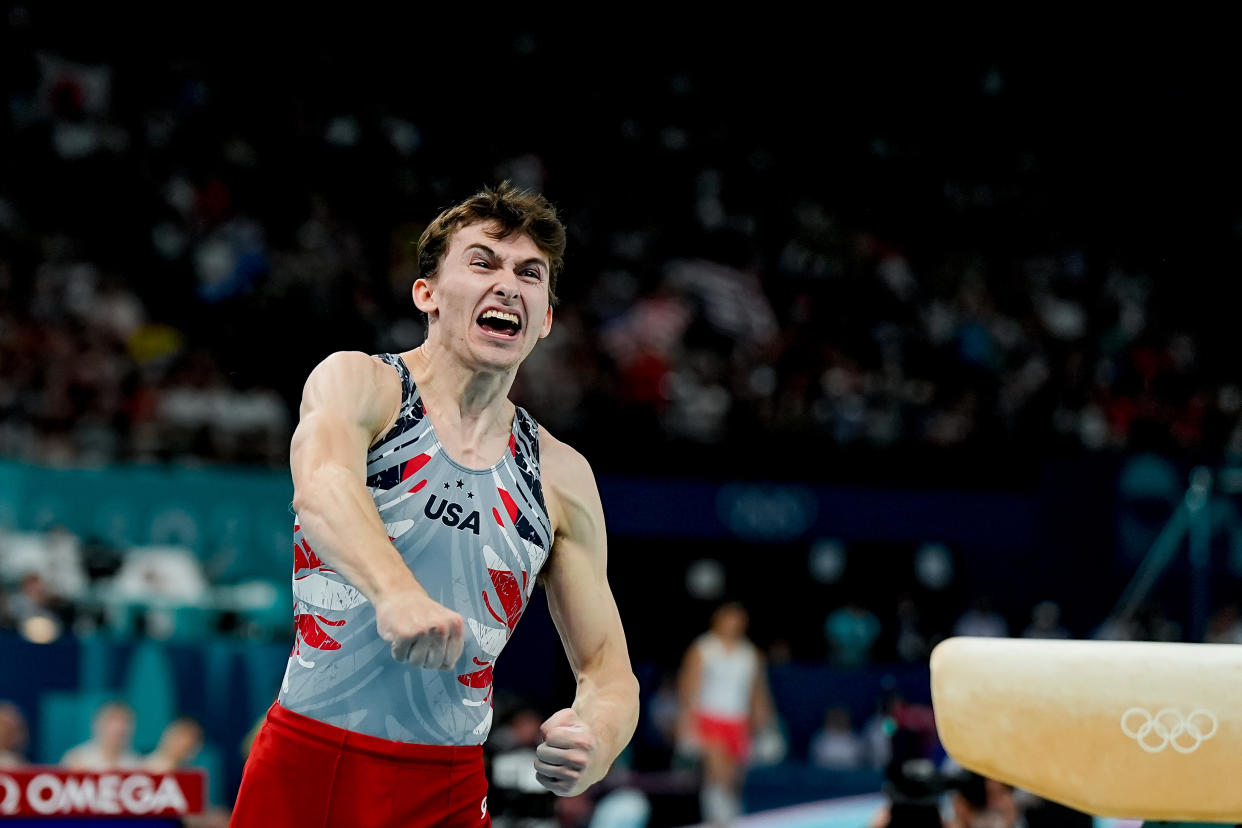
Before performing on the pommel horse, U.S. gymnast Stephen Nedoroscik removed his glasses. But how was the Olympian able to see anything, let alone perform medal-worthy moves?
Nedoroscik told Today that he has to take his glasses off because “if I keep them on, they’re gonna fly somewhere.” Instead, Nedoroscik relies on other senses.
“When I go up on the pommel horse, it’s all about feeling the equipment,” he said. “I don’t even really see when I’m doing my gymnastics. It’s all in the hands — I can feel everything.”
Nedoroscik has strabismus — a condition that can manifest as misaligned or uncoordinated eye movements.
“Basically I’m cross-eyed, and I can switch my dominant eye on command with both eyes opened,” he revealed on TikTok.
The bronze-winning Olympian also has coloboma — a condition where part of the eye tissue is missing, which can result in sensitivity to light, low vision or blindness.
In other Olympics news:
Why is the silver medal getting such a bad rap? According to experts, our expectations shape whether we view a second- or third-place finish as a victory or a failure. They say it's time to change the narrative.
You don't have to be an Olympian to exercise like one. Check out these simple moves inspired by rowing, high jump, gymnastics and more.
Mental strength matters. Here's how three members of Team USA get in the zone — from journaling to juggling.
What are Olympians eating? Boxed mac and cheese, energy chews and hard-boiled eggs are all featured in these Paris-bound athletes' diets.
Even the parents are getting a workout. Some Olympians’ loved ones have been hooked up with heart rate monitors — and for some, watching their kids compete has resulted in spiked readings. Does that mean spectating is a sport in itself?
Simone Biles can teach us a thing or two about mental health. From setting boundaries to taking time for therapy, here are five of her healthy habits to adopt.
Don't miss a medal! Sign up for the Yahoo Sports AM newsletter for Paris Olympics highlights delivered straight to your inbox.
This article was originally published on Aug. 2, 2024, and has been updated.


